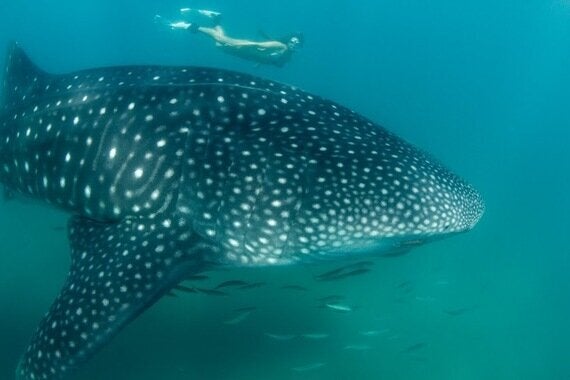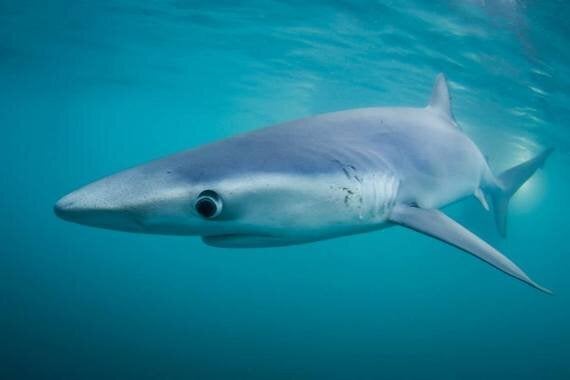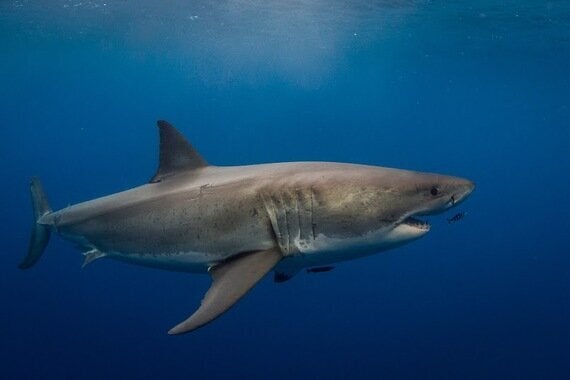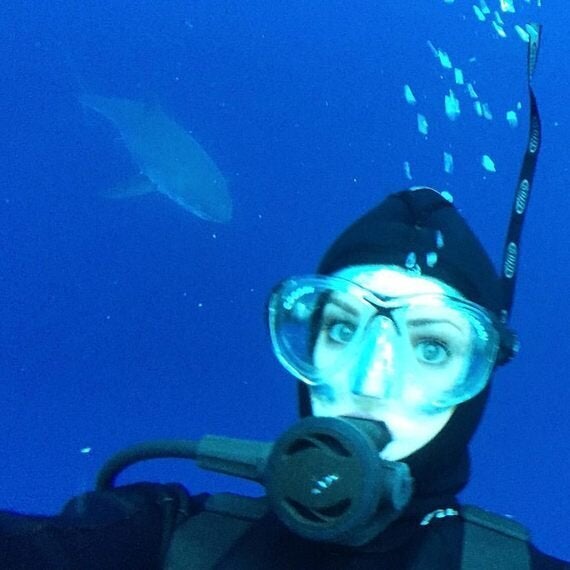Photographs by Joe Platko
Before this year, I had never (knowingly) shared the water with a shark. In fact, I will admit that I was one of those people who would stare nervously into the abyss before diving into deep water - images of dagger-like teeth and deathly black eyes swimming through my mind. Isn't it amazing how we feel fear without needing a first-hand experience?

Now, having worked my way up from snorkelling with Blacktip Reef sharks to diving with Great Whites, I'm a huge fan of these cartilaginous fish - I'm a self-confessed sharkophile!
Despite their reputation, sharks are far from being the ocean's most ruthless killers. That accolade goes, once again, to mankind. Many shark species are now severely endangered due to human activity, even though they have been swimming in the oceans for at least 420 million years (well before the dinosaurs). They need our protection and our understanding. I believe that getting more people diving safely and responsibly with sharks is one of the best ways to keep them cruising in our oceans.

As an introduction to sharing the water with sharks, you really can't beat snorkelling with whale sharks - the biggest fish in the oceans. They are truly gargantuan, with the largest recorded individual well over 12m in length and weighing over 20 tons. Swimming alongside them undoubtedly gets your adrenaline pumping; however, as slow-moving filter feeders they pose no risk to humans. Gliding gracefully, their archetypal white spots spinning light reflections through crystal waters, you cannot feel anything but love and respect for these gentle giants. Their presence deserves distance and respect, and the temptation to touch them should be wholly disregarded. Quietly sharing the waters with these mammoth creatures makes you truly appreciate the diversity of life on this planet. I snorkelled with whale sharks in La Paz, Mexico with Baja Expeditions and would strongly recommend the company.

If you're looking for something a little more adventurous, diving in the Aliwal Shoal, a rocky reef off the coast of South Africa, is another fantastic place for a shark tale. On a single dive here, you can see oceanic blacktip sharks, ragged tooth sharks and even the notorious tiger sharks! You'll be taught a few key tips to staying safe, including keeping your arms crossed (hands flapping around can be mistaken for a distressed fish) and swimming towards sharks if they become aggressive. Although this last tip might seem counterintuitive, as predators, sharks aren't used to being approached so will swim off quickly. I had a fantastic experience with the Aliwal Dive Centre and got some great underwater videos and photos.
Once you're ready to brave the open ocean, California is the perfect place for pelagic shark diving. SD Expeditions is an excellent operator running out of San Diego and,

on a trip with them, you can see shortfin mako and blue sharks. The shortfin mako is the fastest species of shark and can swim in bursts of up to 46mph! They can also leap 9m into the air, so are impressive both in and out of the water. Blue sharks on the other hand are perhaps the most beautiful species, with their elongated bodies and azure colour. They make fantastic underwater photography subjects. Incredibly, Blue sharks can give birth to up to 100 pups at one time - sadly however, they are killed at a rate of 10-20million a year by fishermen catering for the Asian food market. You can learn more about the threat of extinction to sharks via the IUCN website.
The great white shark is the most notorious creature living in the sea and, after swimming with several shark species this year, I felt ready to take on the dive of a lifetime.

Guadalupe Island is the best place on the planet to see Great Whites underwater. Due to the ready availability of food (northern elephant seals, Guadalupe fur seals and California sea lions), the island can have more than 100 toothy individuals patrolling its waters at any one time. The visibility here is also phenomenal with dive sites often boasting 30m of visibility. Channelling my inner James Bond, I crossed an international border and braved rough seas to reach a remote volcanic island - my time to meet the ocean's most infamous predator had arrived.
Catching sight of your first great white shark is a truly surreal experience. Swimming out of the blue, you will see a 4m long torpedo shaped phantom with a sinister looking grin. Having spent a lifetime being told to fear these magnificent creatures, it is only natural to feel afraid. However, I found that the longer I was in the water with them, the more I was able to read their behaviour and see that they weren't after human blood (humans are not a natural prey source for them).

In fact, these sharks are a vulnerable species that need our protection. Indiscriminate fishing has caused the international population of great white sharks to diminish rapidly. As they have a low reproductive potential, late sexual maturity, slow growth rates and high longevity, their populations take a painfully long time to recover. Further difficulty lies in persuading people to support shark conservation when their public reputation is so misjudged. Their presence in our oceans is integral to the carefully balanced ecosystems that mankind is so talented at upsetting, and we need to help regain this balance now before it is too late. I desperately want to see many more of the world's largest predatory fish in our oceans and more people spending time observing them to understand their true nature.
I will be continuing my shark diving adventures next year in Mexico and the Caribbean, with bull sharks, great hammerheads and tiger sharks. You can follow my expeditions on Twitter and Instagram @CatherineCapon and I have more information about recreating these trips on my website.
